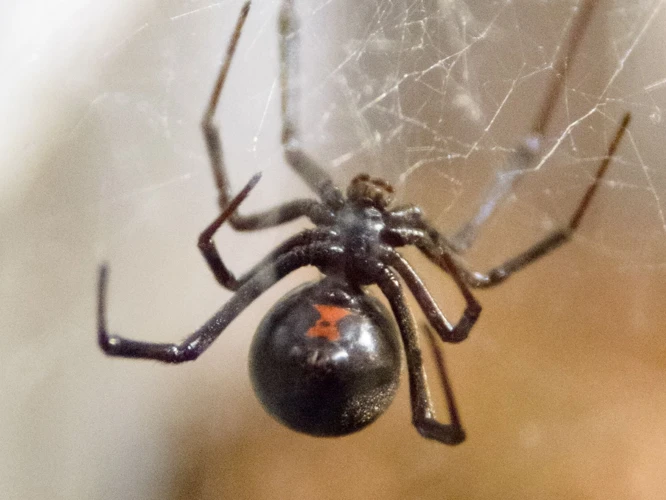The world is full of creatures, both big and small, that have the ability to awe and terrify us at the same time. Among the most feared are black widow spiders, notorious for their venomous bites. But why are these bites so dangerous? What is it about their venom that makes it so potent? In this article, we’ll delve into the science behind black widow spider bites. From their identification and behavior, to the components and workings of their venom, to the effects on the human body, we’ll cover it all. So buckle up and get ready to learn about the fascinating and frightening world of black widow spiders.
The Black Widow Spider
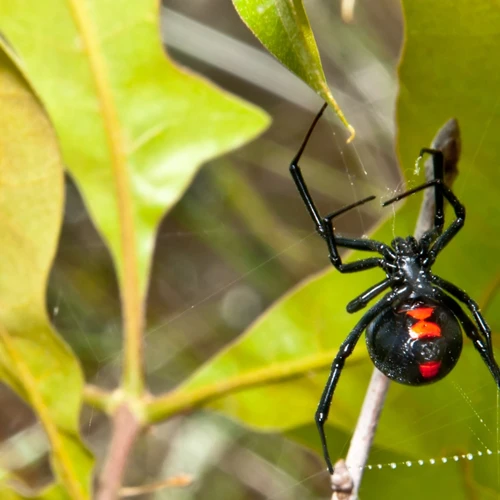
As one of the most notorious spiders in the world, the Black Widow Spider is feared by many. With its unmistakable appearance and potentially deadly bite, it’s important to understand all there is to know about this elusive and dangerous creature. From identifying its unique characteristics to understanding the venom it injects, let’s delve into the science behind why a Black Widow Spider bite is so dangerous. We will also explore how to diagnose and treat venomous bites and what steps can be taken to prevent them. So, let’s get started with the identification and behavior of the Black Widow Spider. For more information about the symptoms and treatment options of Black Widow Spider bites, follow the link.
Identification
The first step in understanding the black widow spider is identifying it. Black widow spiders are a type of arachnid and are easily recognized by their appearance. They are jet black in color and have a distinctive “hourglass” shaped red or orange mark on their abdomen. It is important to be cautious when identifying black widow spiders as their bites can be dangerous. They are typically found in dark, secluded areas such as woodpiles, garages, and sheds. In order to prevent bites from black widow spiders, it is important to take preventative measures such as wearing gloves when working outside and checking dark areas before reaching in.
Here are some additional identifying characteristics of black widow spiders:
- Adult females are larger than males and can be up to 1.5 inches in length.
- They have eight legs and two body segments, the cephalothorax and the abdomen.
- Black widow spiders have a shiny appearance and a rounded, bulbous abdomen.
- Their webs are irregular and tangled in appearance.
If you suspect that you have come into contact with a black widow spider or have been bitten, it is important to seek medical attention immediately. Prompt treatment can help to prevent more serious complications. Learn more about black widow spider bite treatment for kids versus adults here.
Behavior
Black Widow Spiders are known for their distinctive behavior. They are reclusive and tend to avoid humans, preferring dark and damp areas. These spiders are most active at night and can be found in areas such as woodpiles, garages, and basements. The females are known to be more aggressive when disturbed or protecting their egg sacs. It is important to always exercise caution when in areas where these spiders could be present.
Behavioral characteristics of Black Widow Spiders:
- They tend to shy away from humans and other large animals
- These spiders create webs that are used for both prey capture and retreats from danger
- Females tend to have a larger body size than males
- During mating, female Black Widow Spiders have been known to cannibalize the male after mating, although this is not always the case
- Their bites are usually defensive, occurring when the spider feels threatened or cornered
While most of the time these spiders will not attack humans unless provoked, it is important to take necessary precautions when in areas where they are commonly found. If you encounter a Black Widow Spider in your home or yard, it is best to call a professional to handle the situation. If you are working in an area that could be infested with these spiders, it is recommended that you wear gloves and long sleeves to protect yourself from bites.
To learn more about how to prevent and manage Black Widow Spider bites, check out our article on preventing Black Widow bites.
The Venom
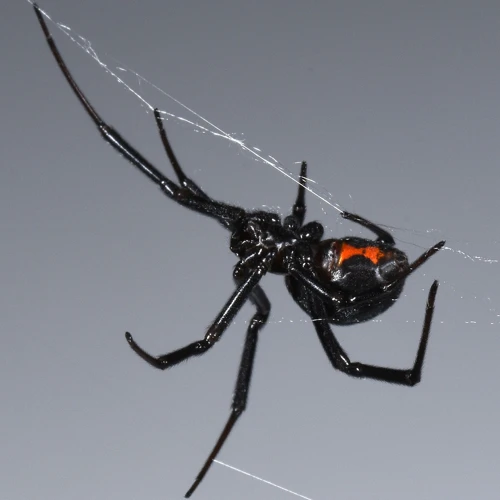
The venom of a black widow spider contains a powerful mixture of toxins that pose a serious threat to human health. While the spider may appear small and harmless, its venom can cause severe and even life-threatening symptoms. Understanding the components of the venom, how it works, and the effects it can have on the body is crucial for anyone seeking to protect themselves from the dangers of these spiders. Additionally, knowing the proper steps to take in the event of a black widow spider bite, such as seeking medical attention and pain management options, can be critical for a successful recovery.
Components of Venom
The venom of a black widow spider is a complex mixture of proteins, enzymes, and other bioactive molecules that work together to produce the characteristic symptoms of envenomation. Some of the key components of black widow venom are shown in the table below:
| Component | Function |
|---|---|
| Alpha-latrotoxin | Affects neurotransmitter release and causes muscle spasms and pain |
| Latrodectin | Creates pores in cell membranes and promotes cell death and inflammation |
| Alpha-lactalbumin | Affects ion channels and causes smooth muscle contraction |
| Phospholipase A2 | Degrades cell membranes and promotes inflammation and tissue damage |
Alpha-latrotoxin is one of the most potent components of black widow venom and is responsible for many of the characteristic symptoms of envenomation, including muscle spasms and intense pain. Latrodectin is also important and contributes to the inflammation and tissue damage that can occur with severe bites. Alpha-lactalbumin and phospholipase A2 are less well-studied, but they are believed to play a role in smooth muscle contraction and inflammation, respectively.
It’s important to note that the exact composition of black widow venom can vary depending on factors such as the age and gender of the spider, as well as its diet and geographic location. This means that the severity and progression of symptoms can also vary, and some bites may be more dangerous than others.
If you suspect that you have been bitten by a black widow spider, it’s important to seek medical attention immediately. In some cases, antivenom may be recommended to help counteract the effects of the venom and prevent further complications. For more information on the treatment and management of black widow spider bites, please visit our article on medical attention for black widow spider bites.
How Venom Works
Black widow venom contains several toxins that work together to cause a variety of symptoms in the victim. The venom contains α-latrotoxin, which stimulates the release of neurotransmitters, especially acetylcholine, at nerve endings. This leads to prolonged contraction of the muscles, which is known as tetanus.
Another component is the latrodectin, which causes the breakdown of cell membranes and affects the regulation of ions within cells.
The venom attacks the nervous system by affecting neurotransmitters and cell membranes.
The venom also contains phospolipases and proteases that affect cell membranes by breaking down phospholipids and breaking up proteins. The venom also causes the release of histamine and other chemicals that lead to localized inflammation.
In more severe cases of black widow envenomation, the venom can lead to paralysis of the diaphragm muscles, which can result in difficulty breathing and, in some cases, death.
The venom contains various toxins that damage cell membranes and cause the release of histamine and other chemicals that can lead to inflammation.
It’s essential to seek medical attention as soon as possible after being bitten by a black widow spider. The quicker the patient receives antivenom, the more effective it is in neutralizing the venom. Without prompt antivenom treatment, some patients may take weeks or months to recover fully.
Antivenom treatment is the most effective method of treating severe symptoms, while pain management and antibiotics may help treat mild-to-moderate cases. In any case, anyone who suspects they might have been bitten by a black widow spider should contact a healthcare professional immediately.
Severity of Bites
When it comes to the severity of black widow spider bites, it’s important to note that not all bites are created equal. The amount of venom injected and the victim’s body weight and sensitivity to the venom can all play a role in how severe a bite may be. However, regardless of these variables, black widow spider bites are widely considered to be one of the most dangerous spider bites in North America.
Symptoms of a black widow spider bite can begin within minutes to hours after the bite occurs. Victims may experience muscle pain and cramping, spasms, abdominal pain and stiffness, nausea, vomiting, and respiratory difficulties. These symptoms can range from mild to severe, and in rare cases, a bite can even be lethal.
Children, elderly individuals, and individuals with weakened immune systems are at a higher risk for severe symptoms and complications.
It’s important to seek medical attention immediately if you suspect you have been bitten by a black widow spider. However, there are steps you can take to manage the pain and symptoms while waiting for medical attention. These steps include washing the bite site with soap and water, applying a cold compress, and taking over-the-counter pain medications.
Avoid applying a tourniquet or attempting to suck out the venom, as these methods are ineffective and can even cause further harm.
If you are experiencing severe symptoms, your doctor may administer antivenom, muscle relaxants, or other medications to help alleviate your symptoms. They may also recommend supportive care, such as intravenous fluids or oxygen therapy.
It’s important to note that while some individuals may recover quickly from a black widow spider bite, others may experience long-term symptoms and complications. Some victims may even experience recurring symptoms months or years after their initial bite.
Proper diagnosis and treatment can help minimize the risk of complications and ensure a faster recovery.
Effects on the Body
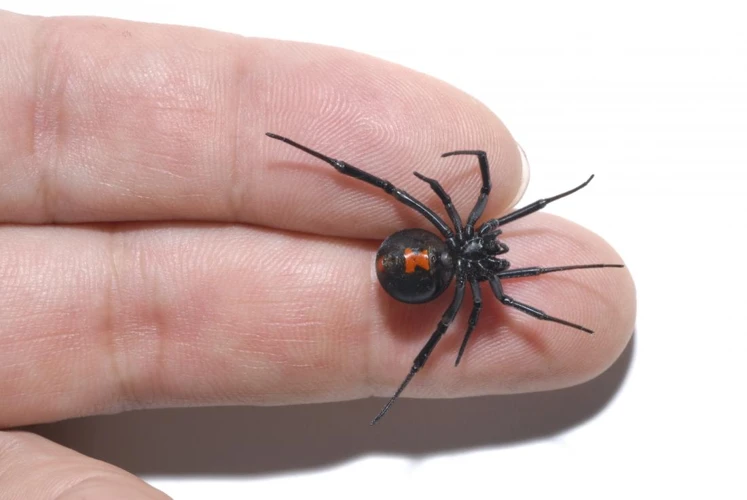
The potency of a Black Widow Spider bite can’t be overstated. The spider’s venom has the ability to cause severe and even life-threatening effects on the human body. The symptoms can vary depending on several different factors, such as the victim’s age, weight, and general health. It’s important to understand these effects in order to recognize and appropriately respond to a potential spider bite. Let’s dive into what happens to the body after a black widow spider bite.
Local Effects
When a black widow spider bites, the venom can cause a range of local effects that can be very uncomfortable for the victim. These local effects are primarily due to the neurotoxic nature of the venom. The following table highlights some of the most commonly observed local effects of a black widow spider bite:
| Local Effect | Description |
|---|---|
| Pain | The bite may cause immediate and intense pain at the site. The pain can spread and become more severe within an hour. |
| Redness and Swelling | The bite may cause redness and swelling at the site, which typically develops within 30 minutes to an hour after the bite. |
| Itching and Tingling | The bite may cause itching and tingling around the site, which can spread to other areas of the body. This may be a sign that the venom is affecting the nervous system. |
| Cramping and Muscle Pain | The bite may cause muscle cramps and spasms, especially in the abdominal area. This can be a sign that the venom is affecting the muscles and nervous system. |
It is important to note that the severity of local effects can vary depending on the individual and the amount of venom injected. Some people may only experience mild pain and swelling, while others may experience excruciating pain and severe muscle cramps. If you are experiencing any of these local effects, it is important to seek medical attention immediately.
Pain management is a key component of the treatment for black widow spider bites. Over-the-counter pain relievers such as acetaminophen or ibuprofen may be recommended by a doctor to help manage the pain. Additionally, applying a cold compress to the bite site can help reduce swelling and alleviate pain. It is important to avoid using any medications that can thin the blood, as this can increase the risk of bleeding.
In the next section, we will discuss the systemic effects of black widow spider bites and the potential complications that can arise.
Systemic Effects
When bitten by a black widow spider, the venom can trigger systemic effects throughout the body. This means that the toxins can affect multiple body systems, rather than just the area around the bite. Systemic effects typically occur within the first hour of the bite and can last for several days.
The following are common systemic effects of a black widow spider bite:
| System | Effects |
|---|---|
| Cardiovascular System | The venom can affect the heart and cardiovascular system, leading to an abnormal heart rate, heart palpitations, and changes in blood pressure. |
| Respiratory System | It can affect the respiratory system and cause difficulty breathing, chest tightness, and wheezing. |
| Nervous System | The venom can affect the nervous system, leading to headache, dizziness, anxiety, and muscle weakness. |
| Gastrointestinal System | It can cause cramps, nausea, vomiting, and diarrhea. |
| Urinary System | The bite can affect the urinary system, leading to difficulty urinating and increased frequency. |
| Whole Body | The bite can cause fever, chills, sweating, and an overall feeling of sickness. |
It is important to note that systemic effects of a black widow spider bite can be very serious, and in rare cases, can be fatal. Seeking medical attention immediately after a bite is crucial to minimize the risk of these systemic effects. If you or someone you know was bitten by a black widow spider, it is important to call emergency services or go to the nearest hospital for treatment.
It is worth mentioning again that the symptoms of a black widow spider bite can be severe. It is always better to take precautions and educate ourselves on how to avoid these bites altogether. In the next section, we will talk about some preventive measures that can help us avoid black widow spider bites.
Click here to learn about the different ways to care for a Black Widow spider bite after it happens.
Diagnosis and Treatment
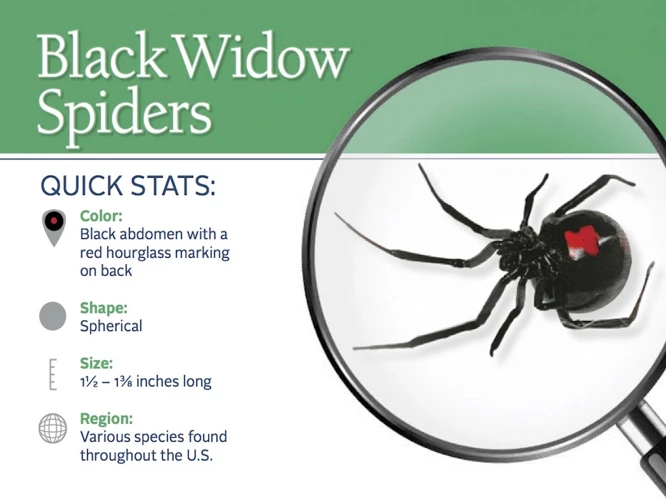
Determining whether or not you have been bitten by a black widow spider can be challenging since the bites are often painless. However, if you suspect that you may have been bitten, it is essential to seek medical attention right away. Diagnosis and treatment options for black widow spider bites are crucial to prevent serious complications from arising. Let’s take a closer look at how doctors diagnose and treat black widow spider bites.
Symptoms
Black widow spider bites can be extremely dangerous if left untreated. Here are some common symptoms that can occur after a black widow spider bite:
| Symptoms | Description |
|---|---|
| Sharp pain | Within a few minutes of a black widow spider bite, a sharp pain may be felt around the area of the bite. This pain can be stabbing and pulsating, spread to the limbs and intensify for hours after the bite. |
| Muscle cramps | Muscle cramps in the abdomen, back, and shoulder can occur within 15 minutes to 2 hours after the bite. These cramps can be severe and can come and go over several hours to days. |
| Sweating | Excessive sweating may occur, especially around the area of the bite. The sweat may be atypical in smell and taste salty. |
| Headache | A headache may develop due to the neurotoxin effects of the black widow venom. |
| Nausea and vomiting | Severe nausea and vomiting may occur due to the toxicity of the venom. |
If you experience any of these symptoms after being bitten by a black widow spider, it is important to seek medical attention immediately. These symptoms can continue to worsen and even progress into systemic effects such as respiratory difficulties and shock.
Preventing black widow spider bites in the first place is the best way to protect yourself from these symptoms. By taking some simple steps like wearing gloves when working outdoors and shaking out any clothing or shoes before wearing them, you can reduce your risk of encountering a black widow spider. If you do get bitten, following the proper steps for recovery and avoiding certain medications can help speed up the recovery process and prevent further complications.
Treatment Options
Effective treatment of black widow spider bites focuses on reducing symptoms and preventing complications. Treatment options may vary depending on the severity of the bite and individual circumstances. Here are some treatment options that can be used for black widow spider bites.
1. Over-the-counter pain relievers: Over-the-counter pain relievers such as ibuprofen or acetaminophen can be used to alleviate pain and reduce inflammation.
2. Muscle relaxants: Muscle relaxants may be prescribed by a doctor to reduce muscle spasms and pain.
3. Anti-venom: In severe cases, anti-venom may be administered to neutralize the venom and prevent further complications. However, anti-venom is only available in hospital settings and should only be administered by medical professionals.
4. Wound care: The bite wound should be cleaned with soap and water to reduce the risk of infection. An antibiotic ointment and a sterile bandage can also be used to cover the wound.
5. tetanus shot: In some cases, a tetanus shot may be recommended to prevent tetanus infection.
It’s important to seek medical attention immediately if you suspect you have been bitten by a black widow spider. The bite may cause serious symptoms that require medical treatment. Additionally, some medications such as opioids should be avoided in the treatment of black widow spider bites as they may exacerbate symptoms.
Early intervention and appropriate treatment are key to managing the symptoms of a black widow spider bite. Follow-up care may be necessary to monitor for potential complications and ensure proper healing.
Prevention
Educating yourself on how to avoid black widow spiders is vital when it comes to preventing bites. These spiders are not aggressive and typically avoid contact with humans. Taking some precautions can be highly effective in preventing bites and reducing the risk of encountering these spiders.
1. Keep your surroundings clean and free of debris: Black widow spiders prefer to hide in dark, secluded areas such as piles of wood, rocks, and other outdoor debris. Eliminating these hiding spots around the home and garden can minimize the chance of encountering these venomous spiders.
2. Shake out clothing and shoes: Black widow spiders often hide in clothing and shoes, especially those left outside or stored in a garage or basement. Before putting on any clothing or shoes that have been stored in these areas, always give them a good shake to dislodge any spiders or webs.
3. Wear gloves and long-sleeved clothing: When working in areas where black widows may be present, such as a garden or garage, consider wearing gloves and long-sleeved clothing. This will minimize the chance of accidentally coming into contact with a spider.
4. Be cautious around outdoor lighting: Outdoor lighting can attract insects, which in turn can attract black widow spiders. Be cautious when approaching outdoor lights at night and be sure to check for spiders before reaching out to turn off the light.
5. Consult a pest control professional: If you are experiencing an infestation of black widow spiders, consult a pest control professional for help in identifying and removing the spiders.
In the unfortunate event that a black widow spider bite does occur, it is important to seek medical attention immediately. Do not attempt to treat the bite yourself, and avoid using any medications or home remedies unless directed by a healthcare professional. For more information on how to respond to a black widow spider bite, click here.
Being aware of how to avoid black widow spiders can help reduce the risk of bites. By being cautious around potential hiding spots, wearing protective clothing, and seeking professional help if needed, you can reduce the chances of encountering these venomous spiders.
Conclusion
In conclusion, the black widow spider is a fascinating yet dangerous creature that demands respect and caution. Its venom is made up of a complex mixture that can cause severe reactions in humans. In fact, the venom is so potent that even a bite from a juvenile spider can be lethal to certain individuals.
Fortunately, diagnosis and treatment have come a long way in recent years, allowing for swift and effective response to minimize the risk of serious harm. Symptoms of a black widow bite include intense pain, muscle cramps, and even paralysis, but medical attention can mitigate these effects.
One way to prevent black widow bites is to avoid contact with the species altogether. This can be a difficult task, as these spiders are common in many areas throughout the world. However, keeping a clean and organized living space can help to deter them as they prefer dark and cluttered environments.
Overall, it is important to be knowledgeable about the dangers of black widow spiders and to take necessary precautions when necessary. With awareness and careful attention, it is possible to coexist with these fascinating creatures while keeping ourselves safe.
Frequently Asked Questions
What are some common myths about black widow spiders?
Contrary to popular belief, male black widow spiders are generally harmless to humans and can actually be helpful in controlling insect populations. Additionally, black widow spiders are not aggressive and typically only bite when threatened.
How can you identify a black widow spider?
Black widow spiders are typically dark in color with a shiny, black body and red hourglass-shaped marking on their abdomen. Females are larger than males, with a body length of up to 1.5 inches.
What is the venom of a black widow spider composed of?
The venom of a black widow spider contains a cocktail of neurotoxins, including alpha-latrotoxin and latrodectin, which can have a profound effect on the human nervous system.
What happens when a human is bitten by a black widow spider?
Black widow spider venom can cause a range of symptoms, including muscle cramps, spasms, and rigidity; nausea and vomiting; sweating; and elevated heart rate and blood pressure.
What are some common treatment options for black widow spider bites?
Treatment options for black widow spider bites may include pain relief, muscle relaxants, and antivenom medication, depending on the severity of the symptoms.
How can you prevent black widow spider bites?
To avoid black widow spider bites, it is important to wear protective clothing when working or playing in areas where they are commonly found, and to avoid reaching into dark, enclosed spaces where spiders may be hiding.
Are black widow spider bites fatal?
While black widow spider bites can be very uncomfortable and even dangerous, they are rarely fatal in healthy adults if treated promptly and appropriately.
What is the difference between a black widow spider and a brown recluse spider?
Black widow spiders and brown recluse spiders are both venomous and can cause serious harm to humans, but they have different physical characteristics and behaviors. Black widow spiders are typically darker in color with a shiny body and distinctive red hourglass marking. Brown recluse spiders are usually brown with distinctive markings on their back. They are also known to be reclusive and typically only bite when provoked.
What should you do if you suspect you have been bitten by a black widow spider?
If you suspect you have been bitten by a black widow spider, seek medical attention immediately. The sooner you receive treatment, the better your chances of a full recovery.
Can black widow spiders be found all over the world?
No, black widow spiders are primarily found in warm, dry regions of the United States, including the southwest and southern states. However, there are also species of black widow spiders found in other parts of the world, including South America, Africa, and Australia.

